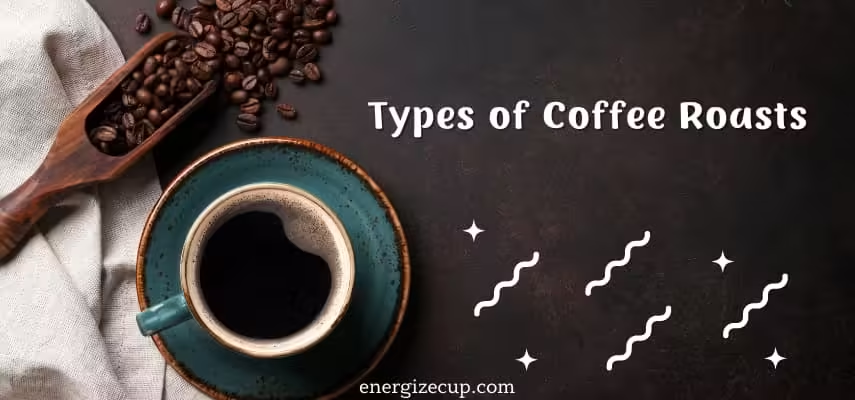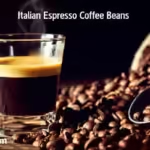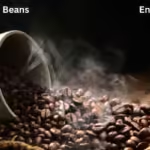
Types of Coffee Roasts: Perfecting Art (Top Secrets!)
Have you ever wondered how simple green beans are transformed into the coffee that energizes your mornings? This transformation is a result of the art of coffee roasting—a process as transformative as a sculptor shaping a masterpiece from clay.
Roasting coffee is akin to a choreographed dance of heat and time. Roasters are akin to artists, utilizing their expertise to accentuate the distinct characteristics of each bean. Starting with meticulously selected green beans, they apply intense heat. As the beans heat up, they crackle and pop, unveiling their rich, hidden flavors. This meticulous process ensures that your favorite coffee is bursting with the aromas and tastes you cherish.
The Art of Coffee Roasting: Transforming Beans from Pale to Perfection
Envision starting with green, unroasted coffee beans that lack the deep, iconic flavors of brewed coffee. Initially, these beans resemble raw peanuts in both taste and texture, possessing a mild grassy undertone.
The transformation process, known as roasting, unlocks their hidden potential, resulting in the rich and complex coffee that delights connoisseurs.
Essentials of Coffee Roasting: Balancing Heat and Duration
In coffee roasting, the interplay between heat and time is crucial. Roasters, akin to culinary chefs, meticulously manage these elements to highlight each bean’s distinctive flavors and characteristics. Here’s a simplified overview of this intricate process:
- Beginning with the Basics: The journey starts with selecting premium green coffee beans, each distinguished by its origin and inherent flavor profiles.
- Initiating the Heat: These beans are then placed into large roasters—either drum or air-based systems—where they encounter temperatures between 370°F and 580°F.
- Hearing the First Crack: As temperatures rise, the beans emit a popping sound, known as the “first crack,” signaling a pivotal transformation within the bean’s structure and releasing the quintessential coffee aroma.
- Developing Depth: The roasting continues beyond the first crack, intensifying flavors and aromas. Coffee is more than just a beverage; it’s a crafted experience. Like transforming raw fruit into a delightful dessert, roasting turns simple beans into flavorful marvels.
- Experiencing the Transformation: Roasting is akin to culinary cooking, tailored for your taste buds. The duration of heat exposure determines whether the beans develop a light or dark roast, each offering a unique flavor spectrum.
- Listening for Changes: During the roasting, the beans undergo a “crackle” indicating ongoing changes. The first crack denotes the start of flavor development, while a second crack, typical in darker roasts, suggests that sugars are caramelizing, enhancing the flavor complexity.
- Final Cooling: Achieving the desired roast level prompts rapid cooling to stop the process, similar to removing a cake from the oven at the optimal moment, ensuring the flavors are perfectly preserved.
Exploring Coffee Roasts: A Spectrum of Flavors

Coffee roasting offers a diverse palette of tastes, each tailored to personal preference. Here’s a brief overview of the various roast levels:
- Light Roast: The Early Riser
These beans undergo a shorter roasting period, achieving a golden hue and delivering a bright, acidic flavor reminiscent of a zesty fruit salad. - Medium Roast: The Balanced Choice
Often referred to as the “golden middle,” medium roasts strike a harmonious balance between acidity, sweetness, and body, making them popular among those who appreciate a well-rounded coffee profile. - Dark Roast: The Bold Enthusiast
Subjected to the longest roasting time, these beans boast a dark, almost black appearance and offer a bold, robust flavor with smoky or slightly bitter undertones, ideal for espresso or cold brew enthusiasts.
Also Read: Exploring the Art of Coffee Etiquette- A Complete GuideAppreciating the Art of Roasting
Each sip of coffee is a celebration of the roaster’s artistry. From the meticulous selection of green beans to the precise management of roasting time and temperature, every cup reflects the roaster’s skill and commitment.
Remember, when you choose your coffee, you’re not just selecting a beverage but engaging with a story that’s been carefully crafted to reach your mug.
FAQs: Types of Coffee Roasts.
What are the 4 types of coffee roast?
Light roast, medium roast, medium-dark roast, and dark roast are the primary categories of coffee roasts, each distinguished by unique aromas, visuals, and flavor profiles.
What are the best types of coffee roasts?
If you appreciate the robust, classic flavor, dark roast coffee might suit you. For a sweeter taste, consider medium roast beans, while light roast beans best capture the unique flavors and aromas of the coffee.
How many coffee roasts are there?
Although numerous variables affect roasting, there are four main roast levels: City, Full City, French, and Italian, each producing distinct coffee experiences.
What are the 3 roast levels of coffee?
The common terms for coffee roasting levels are Light, Medium, and Dark, each indicating the duration and intensity of the roast.
Which coffee roast is healthiest?
Dark roasts are rich in compounds beneficial for stomach health and high in antioxidants. Medium roasts preserve more chlorogenic acid, offering additional health benefits.





